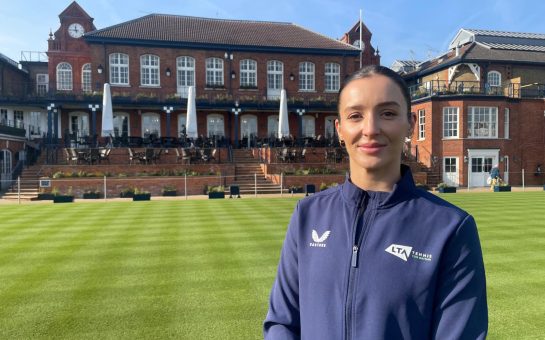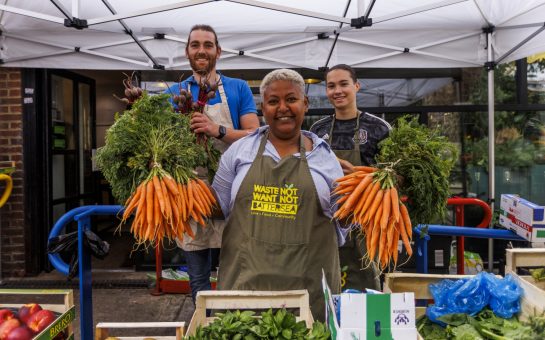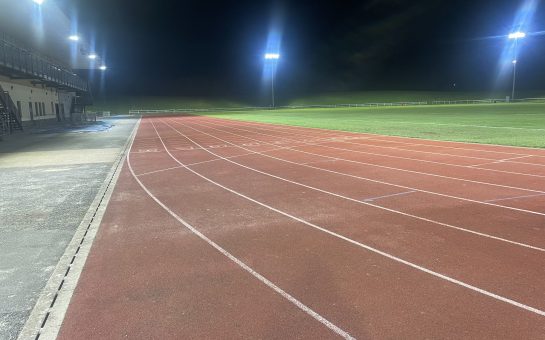The LTA must build on the Wimbledon Champion’s success.

Andy Murray’s colossal achievement of ending 77 years of hurt by winning Wimbledon has truly put British tennis back on the map.
It is hoped the Scot’s achievement will encourage more youngsters to take up the game, fittingly a year after the Olympic Games were held in London with the slogan ‘inspire a generation’.
Simon Long, LTA Chief Commercial Officer said: “There’s no doubt that, with Andy’s success, tennis is in the spotlight here in the UK more than ever, and it is up to us to work with our partners to take this golden opportunity and build on the plans that we have already in place.”
“We are unquestionably ramping up our contact with our field team, with our partners such as Sport England and others in the tennis landscape to make sure that we don’t lose this opportunity.”
Sports England, who distribute taxpayer’s money in sporting bodies, placed the LTA under scrutiny in June however for failing to boost levels of tennis participation.
It was stated that £10.3m in funding would be withheld until it is decided whether the LTA are doing a good enough job.
Indeed, despite the supposed Olympic legacy, there was only a 0.95% increase in members of the public playing tennis between April 2012 and April 2013 from the previous year, while weekly participation in sport generally fell by 200,000.
A Sport England spokesman said: “We have seen an encouraging response from the LTA.”
“The LTA have developed strong plans in developing tennis in the community making it more widely accessible”
Recent schemes run by the LTA, who have invested £25m into tennis facilities over the past five years, include ‘family sessions’ in London and the South East, where parents and children are provided with equipment to play for two hours for £3.
Another upcoming programme is ‘Give it a go’ in London, where Hyde Park and Victoria Park will host a number of free taster sessions between July 28 and August 12.
Other more established LTA schemes include ‘Cardio Tennis’, fitness based group activities, and pop-up tennis courts supplied across the country in towns and cities such as Chorley, Hastings, Newcastle, Solihull and Birmingham.
Despite such ventures scrutiny and scepticism towards the LTA comes in the light of how Murray developed into the world class player of today, as he felt the need to travel to Barcelona as a 15-year-old for coaching.
The British number one is seen as the athlete who broke free from the LTA’s rigid system, with the British number two in contrast, James Ward, being ranked at 215.
Speaking on This Morning, Murray said: “I hope kids start playing more tennis, but for that to happen there needs to be all the right facilities, and it needs to be more accessible for children to play.”
The cost of playing the game is a stumbling block, as out of 21,000 public courts across the country just 1,600 can be used for free.
Yvonne Fraser, Membership Secretary of Hertford Lawn Tennis Club in Hertfordshire, discussed how the financially disadvantaged can feel excluded from tennis, with the cost of coaching and facilities.
“We’re renting our club premises from Hertford council, we have a coach who we hope to retain, we have the day to day cost of running a club. Our membership fees cover these costs,” she said.
How local councils prioritise sport spending will also likely have an impact on participation levels.
In Merton last year the council spent £190,000 on renovating 10 of its tennis courts in the Wimbledon Park area, while the district boasts 50 public tennis courts.
Courts are generally not so plentiful however, with the East Hertfordshire area outside London offering a more modest 7 public tennis courts for example.
Boosting participation is the aim of several charities, such as Tennis for Free and the Tennis Foundation.
By their own admission the Tennis Foundation, who work closely with the LTA, consider the Aegon Schools Tennis programme, launched in 2009, to be their greatest achievement.
The programme has supported more than 16,000 schools with teacher training, resources and equipment to promote the sport, and in light of the scheme Secondary school competition has increased by 14% in last two years.
A Tennis Foundation statement said: “With these programmes already in place, it makes it even easier for people inspired by Murray and our other top players to pick up a racket and have some fun. “
Despite two pulsating summers of British sport in a row, the idea of whether Sport England and other bodies such as the LTA can achieve a long lasting legacy remains a contentious issue.
Stewart Harris, chief executive of Sport Scotland, speaking to BBC Radio 4’s You and Yours, said: “Legacy is something we do every day of our lives, that’s our job. It’s not just about the big events. They do help though.”
“If you look at Andy Murray’s success on Sunday there’s a real feel good factor around the country and I think that’s something to be proud of.”
It is hoped that such a feel good factor will be maintained when Glasgow hosts the Commonwealth Games in 2014.
Also speaking on the programme was former Javelin world record holder Steve Backley.
“You don’t have to set out with the best facilities and the best coaching, you just need to nurture the talent,” he argued.
When questioned on the cost of tennis facilities and coaching, he added: “Are you expecting somebody else to have all the answers for you?”
Whether Sport England and the LTA can create a legacy with the help of Andy Murray, British tennis may be judged on how long it takes to produce another Wimbledon winner.
Photo courtesy of jibber11, with thanks.
Follow us @SW_Londoner




